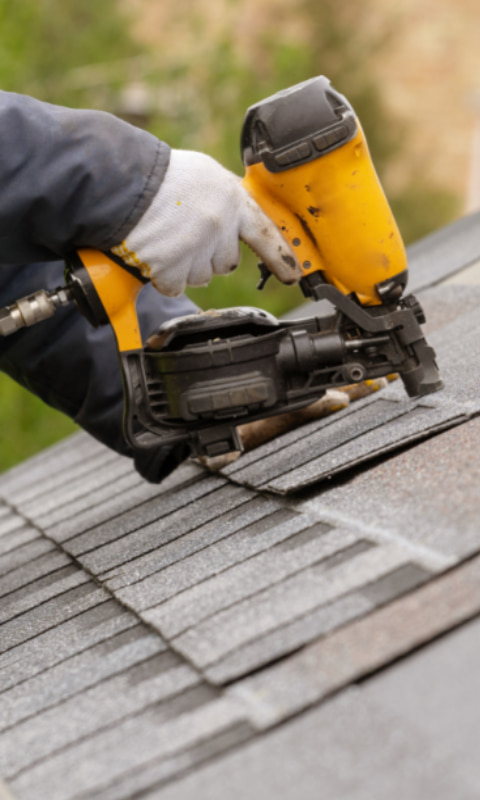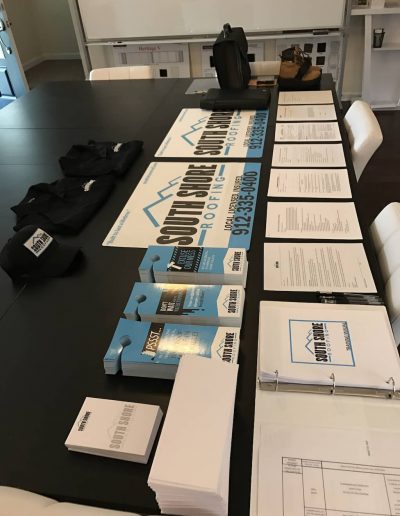
Roof issues can catch us off-guard no matter the season and time of the year. But what happens when your roof completely breaks down during winter?
Can you even replace your roof when it’s cold, snowy, windy or raining outside?
In short – of course you can. Professional and experienced roofers are familiar with all types of roof replacements in all types of weather.
It is true, however, that different seasons will require different considerations and preparations, so let’s take a look at winter roof replacements.
What are some of the main factors to consider and are there any benefits to a winter roof replacement? Read on and find out!
How Does Winter Impact Different Aspects of a Roof Replacement?
Every season, climate, and type of weather comes with its own set of considerations when it comes to the roof replacement process. There are, however, some very specific challenges that need to be taken into consideration and overcome during the colder winter weather.
Winter roof replacements will require a bit more caution, but with an experienced and expert roofer on the job, your replacement should go off without a hitch.
Roofers
When it comes to roofers themselves, health and safety should always be top priorities.
Working on heights always comes with a set of certain risks that roofers are usually familiar with. That is why they should be adequately trained and use proper safety equipment.
When it comes to winter, however, the risks are inevitably enhanced and some of the most common hazards are slippery surfaces due to ice, snow or rainwater, as well as adverse weather and extreme cold.
In order to minimize all risks and ensure that all parties are protected, you as a homeowner should make sure you are working with a trained and certified professional.
You can do this by asking the roofer about their training, experience, as well as their health and safety programs.
In addition to that, your roofing contractor should have workers’ compensation and general liability insurance so that you are not held liable for any on-site injuries and medical costs.
Therefore, don’t hesitate to talk with your roofer about the entire process, inquire about all the details, and make sure they’ll stay protected and do a quality job.


Roofing Materials
When it comes to the installation of roofing materials, such as shingles, the ideal temperature for their installation is between 40 degrees and 85 degrees Fahrenheit.
This means that if the winter is mild and the temperatures are not below freezing, there is basically nothing stopping you from doing a roof replacement. There should be no outstanding issues with your shingles and the process should go smoothly.
If the temperatures are lower than 40 degrees, this still doesn’t mean that the replacement is impossible or not recommended. This only means that some extra caution will be required when handling the shingles.
At temperatures below 40, shingles are known to become more brittle and prone to breaking, but an experienced and meticulous roofer should be able to install them successfully.
In addition to shingles, lower temperatures will also affect the sealant. Sealant or adhesive is used to tab the shingles firmly together, preventing them from being blown off or lifted by wind.
The sealant is activated by heat, i.e. warm temperatures, which we usually get during spring and summer. However, this doesn’t mean that it won’t activate at lower temperatures but only that the activation process will take longer.
Roofing Tools
Some of the most important tools in a roof replacement process are nail guns and compressors.
During winter, especially below-freezing temperatures, they may be adversely affected as well.
Compressors are used to push nails into the shingles as deep as it is required so that they are firmly attached to the roof’s structure.
However, these compressors use air and once this air is released into their lines, it can condensate and transform into liquid. This occurrence is usually not a big issue unless temperatures are below freezing.
At below-freezing the liquid may freeze, ice may accumulate inside, and cause the tool to malfunction.
It is very important to drive nails as deep as they should go into the shingles, which is why it is also important to have a fully-functioning compressor to do the job.
And in order to have one, roofers should simply take some extra precautions, monitor their tools, and watch out for ice accumulation.
Experienced roofers will undoubtedly know how to handle the tools and the entire roof replacement process during winter.
They will also be familiar with all potential risks and will know how to minimize them and make sure the entire project goes smoothly.
And if you have any doubts or concerns, you can always ask the roofer about the specifics of the replacement and any other details to appease your mind.

Are There Any Benefits to a Winter Roof Replacement?
Of course there are! Even though a winter roof replacement should be done with some extra caution, don’t let this discourage you from having your roof replaced. Your local roofer will undoubtedly do a professional job and apart from that, there are some benefits for you as well.
As not many homeowners opt for a roof replacement during the winter months, you will have the option to schedule the job whenever it suits you. It will probably be easier to schedule the replacement and have the roofer come to your home sooner than they would during spring, for example.
You may just have a new roof within a week even!
In addition to that, you may save yourself a few bucks on the energy bill and weather the rest of the winter in a more energy-efficient, warm, and safe household.
Final Verdict
Winter roof replacements are far from impossible and should not be a problem for experienced and trained roofers. With careful planning, some additional safety measures, and attention to detail, winter should be as viable season as any for a roof replacement.
If your roof has broken down in the middle of winter, don’t hesitate to call your best roof replacement company. We do our job at the highest standards of quality no matter the weather and we will give you a roof that will stand the test of time.











































